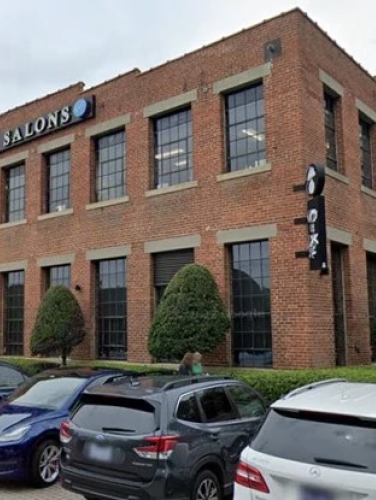
Parks-Cramer Company Complex
(ca. 1919)
The Parks-Cramer Company Complex housed the successor company of one of the earliest innovators in the fields of humidification and air conditioning.
2000, 2006, & 2010 South Blvd, Charlotte, NC 28203
The Parks-Cramer Company Complex, the base of operations for an early manufacturer of humidifiers and air-conditioning systems for the textile industry, represents the concurrent emergence of cotton-textile manufacturing and textile-related factories in and around Charlotte during the late nineteenth and early twentieth centuries. Located along South Boulevard near the mainline of the Southern Railway, the complex is among the most significant early industrial properties surviving in the planned Dilworth factory district (along with the Atherton Cotton Mill) and reflects Charlotte’s status as the hub of the Piedmont’s flourishing textile industry.
Property Quick Links
Built in 1919, the Parks-Cramer Company Complex contained both manufacturing plant and office space for the Parks-Cramer Company, an entity founded in 1918 when the G.M. Parks Company – a Fitchburg, Massachusetts-based manufacturer of industrial piping, heating, and ventilation systems – purchased the business interests of Charlottean Stuart Warren Cramer (1868-1940). Cramer, a prominent textile-mill engineer and contractor, and innovator in the fields of humidification and air conditioning for the textile industry, was among the principal inventors and entrepreneurs associated with the region's growing production of cotton textiles before his 1918 retirement.
Early in his career, Cramer was chief engineer and manager of Charlotte’s D. A. Tompkins Company – one of the South’s foremost distributors of cotton-mill machinery and supplies – whose owner, Daniel Augustus Tompkins, was a major builder of cotton mills and a leader of New South industrialization. Cramer established his own textile engineering and contracting firm in the city, and is credited with designing and equipping about one-third of the new cotton mills established in the South before WWI. He also acquired extensive holdings in textile mills, including his own mill in his namesake town of Cramerton that featured a model mill and village. Among Cramer’s numerous industrial engineering patents were those for improvements in the humidification systems for textile factories and for the “Cramer System of Air Conditioning” to cool and remove lint from the air in textile mills. Indeed, the term “air conditioning” is attributed to Cramer.
By the 1920s, in addition to the Parks-Cramer complex, the Dilworth factory district had also attracted the Lance Packing Company (makers and distributors of snack-food crackers), the Tompkins foundry and machine shop, the Nebel Knitting Mill, the Hudson Silk Mill, and various other businesses. As the Depression caused other firms to shut down or relocate, the Parks-Cramer Company continued to expand its operations through much of the twentieth century. The company employed 52 men and two women in 1930, but by the 1950s, the work force had grown to over 100 employees. The company functioned at the South Boulevard site until 1988, when the firm sold its operations and leased the factory. In the mid-1990s, the property underwent renovations and restoration for a mixed-used facility accommodating a variety of retail and office spaces.

